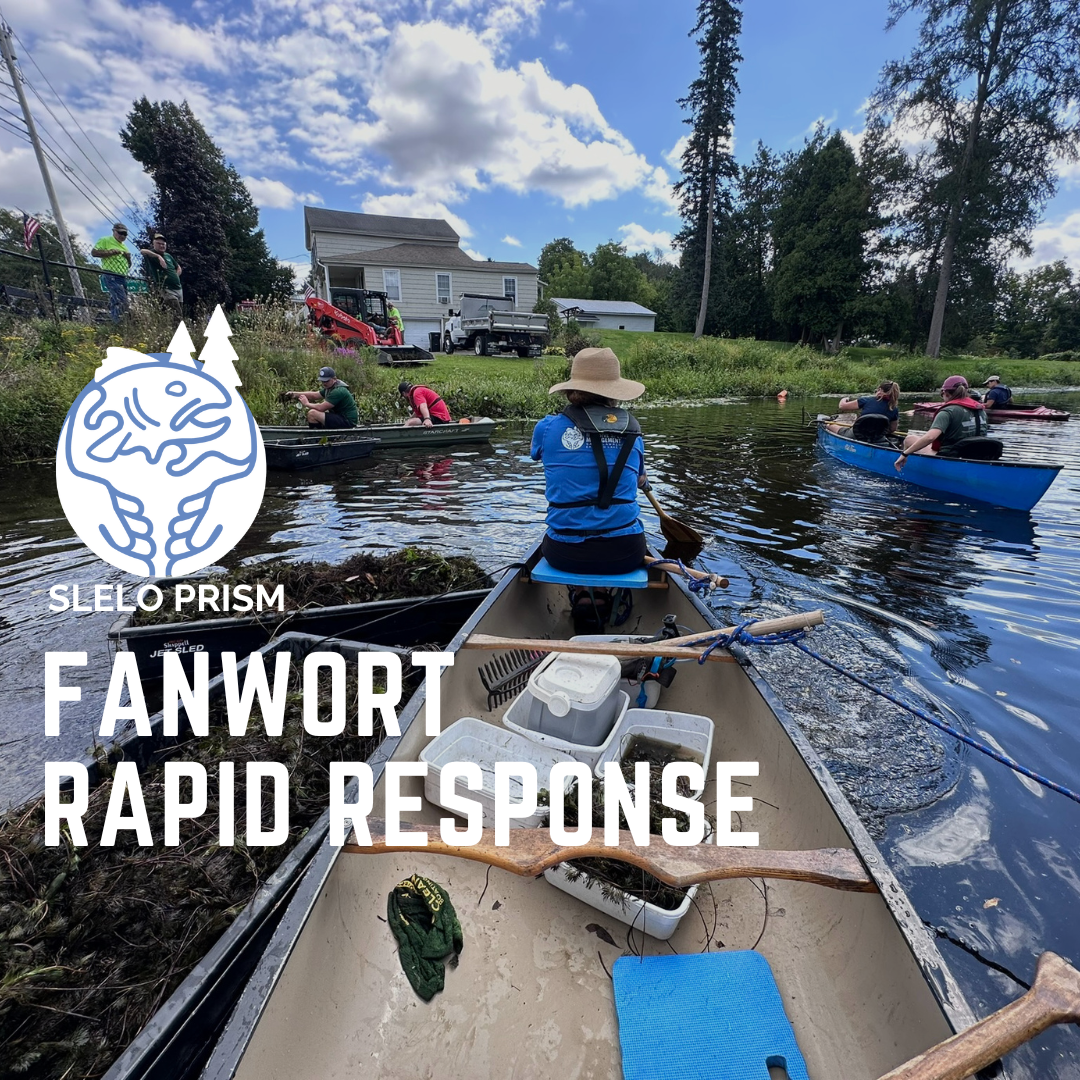Recently, an invasive aquatic plant, fanwort (Cabomba caroliniana), was found to be established in Black Creek in the Village of Mexico. Fanwort is not currently known to be established in nearshore habitats of the Great Lakes and has potential to be impactful and rapidly spread if introduced. This invasive plant is known for outcompeting native vegetation, reducing light availability for benthic organisms and native plants, and reducing dissolved oxygen levels, all of which can impact populations of native aquatic species. This species also easily spreads via fragments carried by water flow or recreational movements, which is why discovery of fanwort close to Lake Ontario immediately raised concerns.
The Youngs Mill Dam, which historically controlled water levels on Black Creek, has undergone reconstruction to enhance fish and wildlife habitat. With the construction activities, there is a heightened risk that fanwort fragments could further spread down Black Creek, which joins the Little Salmon River and drains into Lake Ontario. To help reduce the spread potential of fanwort into these waterbodies, staff from SLELO PRISM, Cornell University’s Water Resources Institute, Village of Mexico DPW, and NYS DEC joined efforts to remove an area of the fanwort surrounding the reconstruction zone and the sparse populations of the plants downstream.
Community members and anglers who visit Black Creek and Little Salmon River can help stop the spread of fanwort by looking for and reporting observations, and always practicing Clean-Drain-Dry protocols with all boating and fishing equipment.
If you are a charter captain or licensed fishing guide, you can further assist by sharing this information with your clients (fanwort flyer & postcards).
Help spread the word about fanwort and these efforts by sharing our Facebook and Instagram posts, or press release on this topic.
Fanwort can be identified by its submerged stems with leaves connected by a long stalk (petiole) and fan-like leaves that have split tips forming a Y-shape. The plant also grows small white flowers that can be seen above the water during the summer (see image).
If you think you’ve found fanwort, please take a clear close-up photo, note the location (GPS coordinates are best), and report observations to iMapInvasives or directly to the SLELO PRISM’s Aquatic Restoration and Resiliency Coordinator, Brittney Rogers at, Brittney.rogers@tnc.org.

SLELO PRISM also encourages community members to commit to monitoring Black Creek and the Little Salmon River for fanwort and other aquatic invasive species annually throughout the spring and summer. The program offers annual training in the spring. Currently, fanwort is not considered to be widespread in the region, and by aiding early detection efforts, you’re helping to keep it that way.

The photos below were taken from the fanwort hand pull that occurred on August 29th, 2024 on Black Creek in Mexico, NY. Photo credit, SLELO PRISM.













Please fill out the form below to be added to our listserv and receive our seasonal newsletter, event invitations and other announcements.


